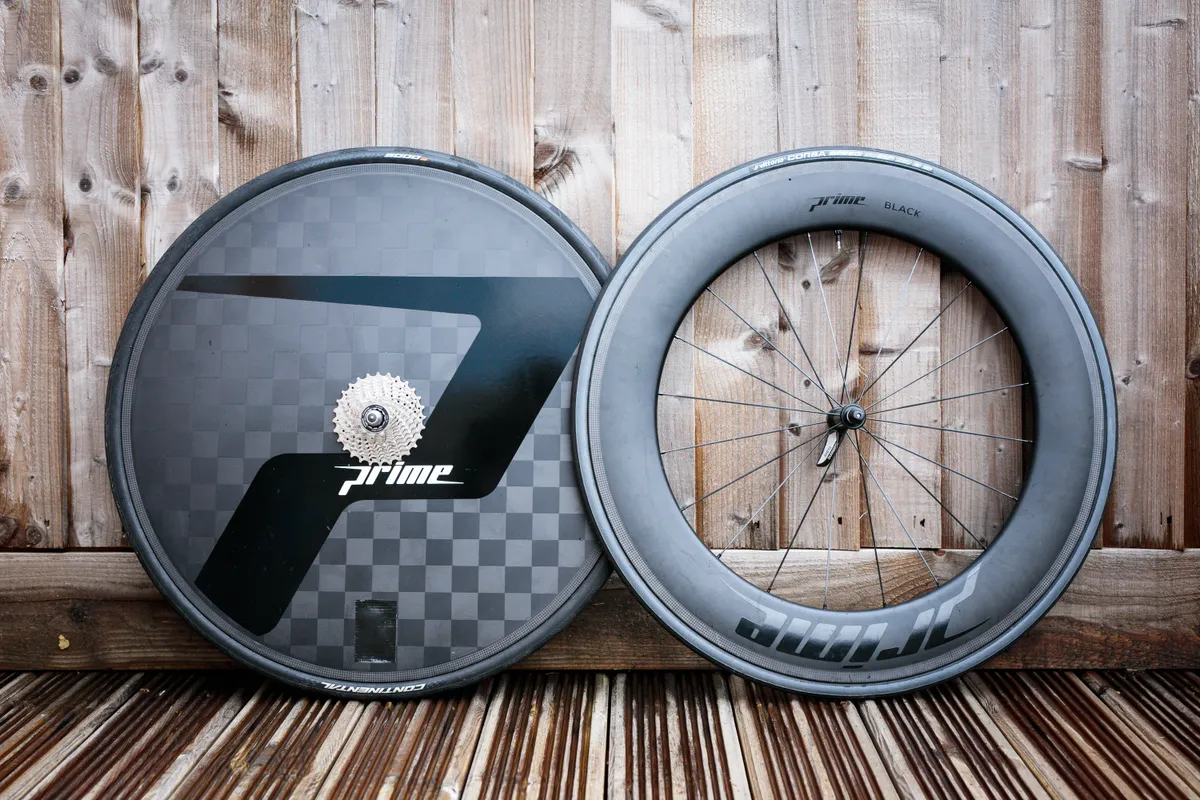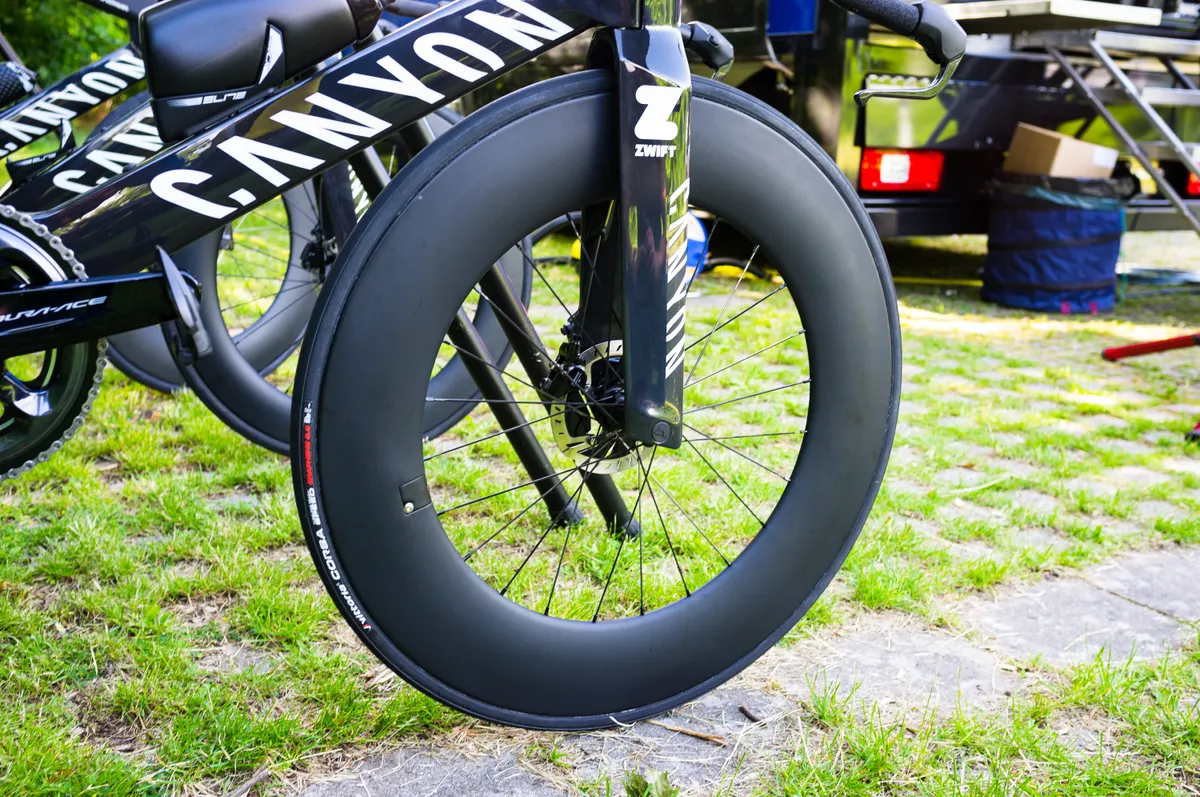HED has announced the Jet 180, a new rear wheel with a 180mm-deep rim.
The Jet 180 is designed specifically for athletes competing at the Ironman World Championship in Kona, Hawaii. Full rear disc wheels are banned at Kona due to concerns over safety in windy conditions.
The 180mm-deep rim has a maximum external width of 32.5mm and an internal width of 21mm.
It is tubeless-compatible and available in both rim and disc brake form. Claimed weight for the wheel is 1,229g in disc brake form, or 1,258g in rim brake form.
HED has yet to announce pricing, but has indicated availability is currently in four to six weeks from order, with a limited number of wheels being available at the 2022 Ironman World Championships in Kona.
How fast is the HED Jet 180?

At the time of writing, HED has not published any performance claims or data comparing it to other, more traditional aero wheels in its range, such as the Jet 6 or Jet Disc.
That said, the aim of the wheel appears to be to mimic the rim surface area of a disc wheel as much as possible, within the limits imposed by the race organisers at Kona.
The massively increased rim surface area of disc wheels and rims such as this helps to improve aerodynamic efficiency in two ways, depending on how the wind is hitting them.

In a head wind or cross headwind, the deep rim or surface of a solid disc helps to keep the airflow attached to the wheel for as long as possible. This reduces turbulent airflow and decreases drag.
In a tailwind or cross-tailwind, the surface area of the rim acts as a sail, helping to push the rider forward with greater efficiency.
Could this rim be used on a front wheel?

Theoretically, yes, although HED is only offering it as a rear wheel for now.
Neither the ITU (International Triathlon Union) nor the UCI (Union Cycliste Internationale, cycling’s world governing body), place a specific restriction on front-wheel rim depth in individual time trials.
Britain’s time trial governing body, the CTT does place a limit on front rim depth however. Its rules state a front wheel “must have at least 45 per cent of the surface area open”, although how this would be measured at an event is unclear.

Regulations aside, though, the primary issue holding people back would likely be concerns about handling.
A super-deep rim may well be theoretically faster than a shallower one (all else being equal), but if it prevents you from confidently holding an optimal aero position on the bike because it keeps catching the wind, then you’ll likely be slower overall.
Today’s wider and more sophisticated rim profiles generally offer vastly improved handling characteristics compared to rims of the past, however.
As a result, time trial and triathlon specialists are routinely pushing the envelope for incremental gains.

Aerocoach’s AEOX Titan front wheel, which has a 100mm-deep rim, has seen extensive use by some of the world’s top time trial specialists in recent years, such as Filippo Ganna, Geraint Thomas and Wout van Aert.
Rumours have even circulated that at least one WorldTour team has tested a front disc wheel for time trial use on the road, and hasn’t ruled out the possibility of using it in a race scenario.
So, if HED were to make this rim available for use as a front wheel, you can be sure it would pique some interest among the marginal gains chasers.
